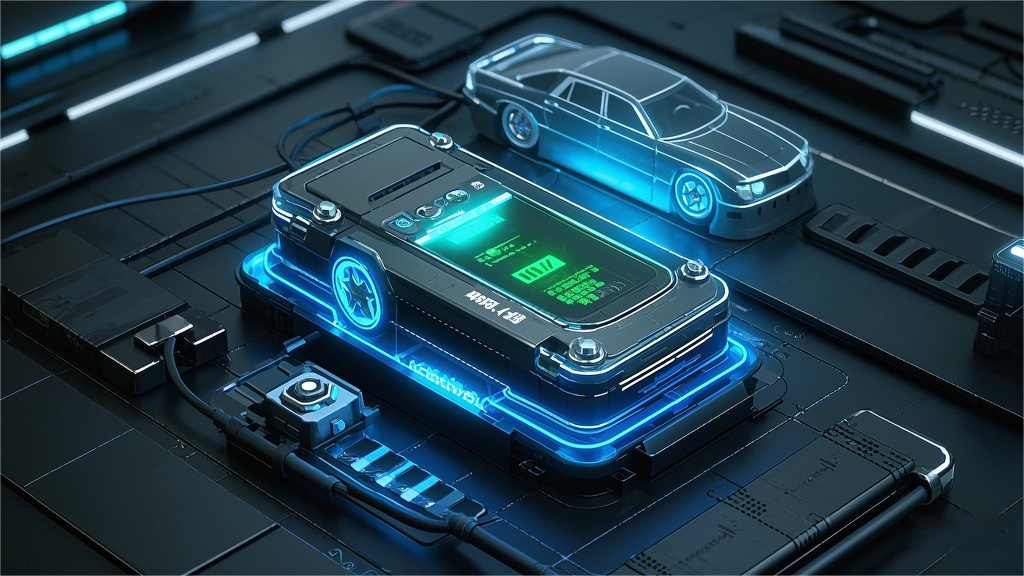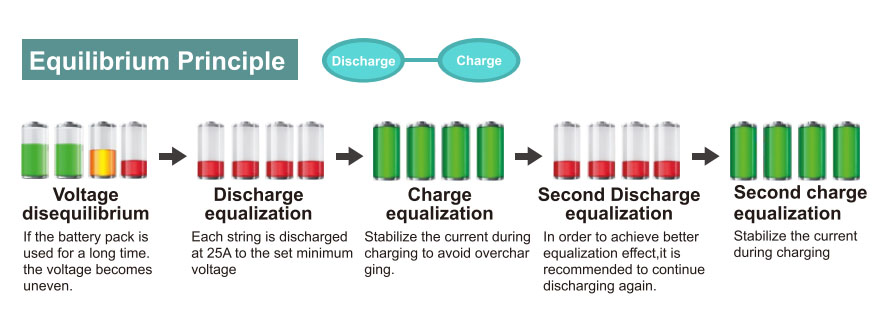Introduction:
During the use and charging process of batteries, due to the differences in the characteristics of individual cells, there may be inconsistencies in parameters such as voltage and capacity, known as battery imbalance. The pulse balancing technology used by the battery equalizer utilizes pulse current to process the battery. By applying pulse signals of specific frequency, width, and amplitude to the battery, the battery equalizer can adjust the chemical balance inside the battery, promote ion migration, and ensure uniform chemical reactions. Under the action of pulses, the sulfurization phenomenon of battery plates can be effectively reduced, allowing the active substances inside the battery to be fully utilized, thereby improving the charging and discharging performance of the battery and achieving the balance of parameters such as voltage and capacity of each individual cell in the battery pack.

.jpg)
Compared with traditional resistance balancing technology
The traditional resistance balancing technology is achieved by paralleling resistors on high voltage individual cells to consume excess power for balancing. This method is simple and easy to implement, but it has the disadvantages of high energy loss and slow balancing speed. Pulse equalization technology, on the other hand, directly intervenes inside the battery through pulse current, without consuming additional energy to achieve equalization. It also has a faster equalization speed and can achieve better equalization results in a shorter period of time.

Advantages of pulse equalization technology:
The pulse equalization technology used in battery equalizer has many advantages. In terms of improving the performance of battery packs, it can reduce the performance differences between individual cells in the battery pack, make the overall performance more stable and consistent, and thus improve the output power and energy efficiency of the battery pack. For example, in electric vehicles, a battery equalizer combined with pulse balancing technology can enable the battery pack to provide more stable power to the vehicle, reducing the problems of power loss and shortened range caused by battery imbalance. In terms of extending battery life, this technology can effectively alleviate the polarization and sulfurization phenomena of batteries, reduce the aging rate of batteries, and prolong the service life of batteries. Taking mobile phone batteries as an example, using a battery equalizer with pulse balancing technology for regular maintenance can maintain good performance of the battery after multiple charge and discharge cycles, reducing the frequency of battery replacement. At the same time, pulse equalization technology can enhance safety, making the temperature, voltage, and other parameters of each individual battery more stable during the charging and discharging process of the balanced battery pack, reducing safety risks caused by battery overheating, overcharging, and over-discharging, such as reducing the probability of battery fires, explosions, and other safety accidents.
Implementation method of pulse equalization:
From the perspective of implementation methods, battery equalizer mainly have two approaches: hardware circuit implementation and software algorithm control. In terms of hardware circuit implementation, battery balancers usually use specialized pulse balancing circuits, which consist of microcontrollers, pulse generators, power amplifiers, voltage detection circuits, etc. The microcontroller monitors the voltage of each individual cell in the battery pack in real time through a voltage detection circuit. Based on the voltage difference, it controls the pulse generator to generate corresponding pulse signals, which are amplified by a power amplifier and applied to the battery. For example, the battery balancer integrated in some high-end lithium battery chargers can automatically balance the battery during the charging process. In terms of software algorithm control, the battery balancer utilizes advanced algorithms to precisely control the parameters of pulses, such as frequency and duty cycle. According to the different states and characteristics of the battery, software algorithms can dynamically adjust the pulse signal to achieve the best balance effect. For example, in an intelligent battery management system, the battery balancer optimizes the pulse balancing process by combining software algorithms with real-time battery data, improving the accuracy and efficiency of balancing.
Application scenarios of the battery equalizer:
The pulse equalization technology used in battery equalizer has a wide range of application scenarios. In electric vehicle battery packs, due to the extremely high requirements for battery performance, lifespan, and safety, battery equalizer combined with pulse balancing technology are widely used in electric vehicle battery management systems to ensure good performance of the battery pack during long-term use, extend its lifespan, and reduce usage costs. In renewable energy storage systems such as solar and wind power, the battery pack size is relatively large, and the problem of battery imbalance is more prominent. The use of pulse balancing technology in battery balancing instruments can help improve the stability and reliability of energy storage systems, ensure that energy storage batteries can operate efficiently and safely, and improve the utilization efficiency of renewable energy. Even in portable electronic devices such as laptops and power banks, although the battery pack size is relatively small, the use of pulse balancing technology in battery equalizer can effectively improve battery performance and lifespan, providing users with a better user experience.
Request for Quotation:
Jacqueline: jacqueline@heltec-energy.com / +86 185 8375 6538
Nancy: nancy@heltec-energy.com / +86 184 8223 7713
Post time: Apr-28-2025


